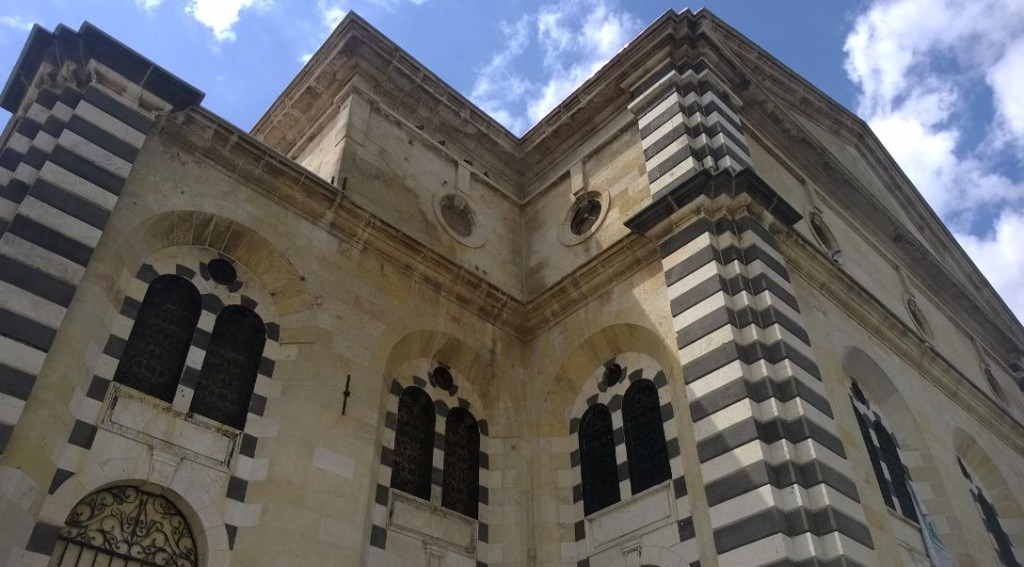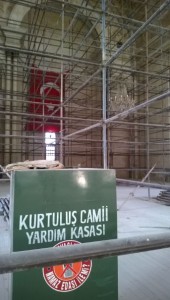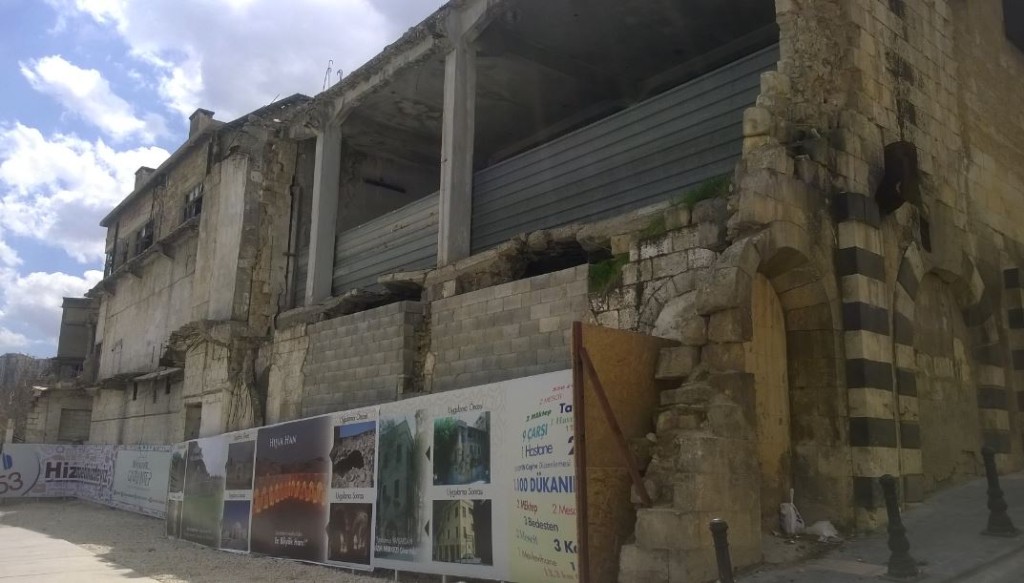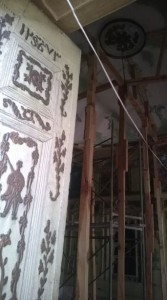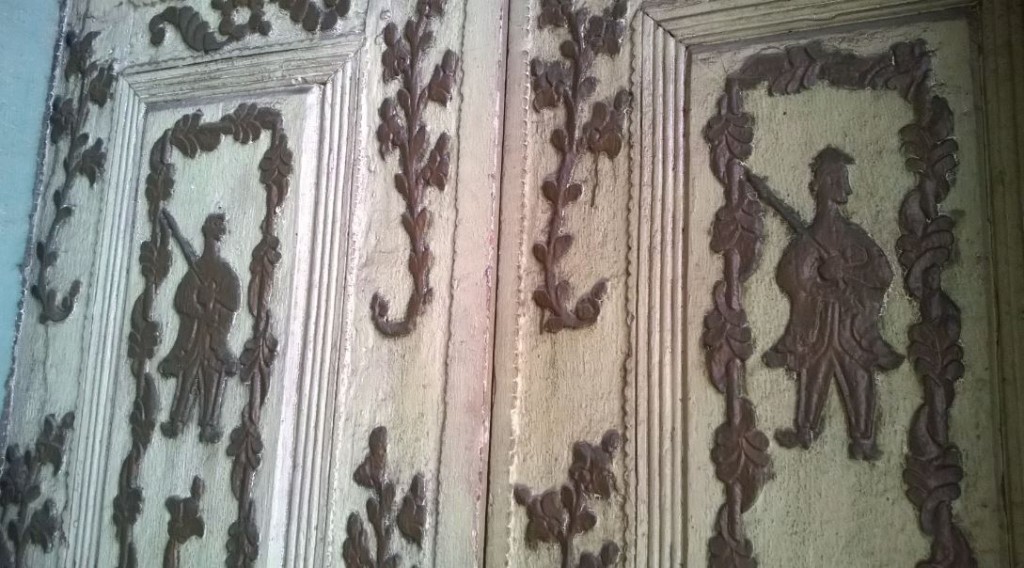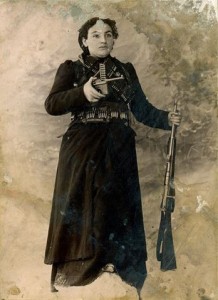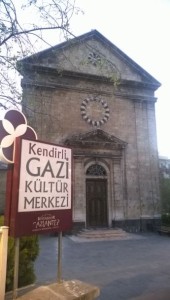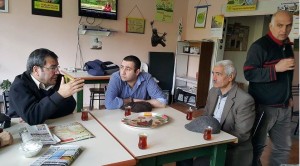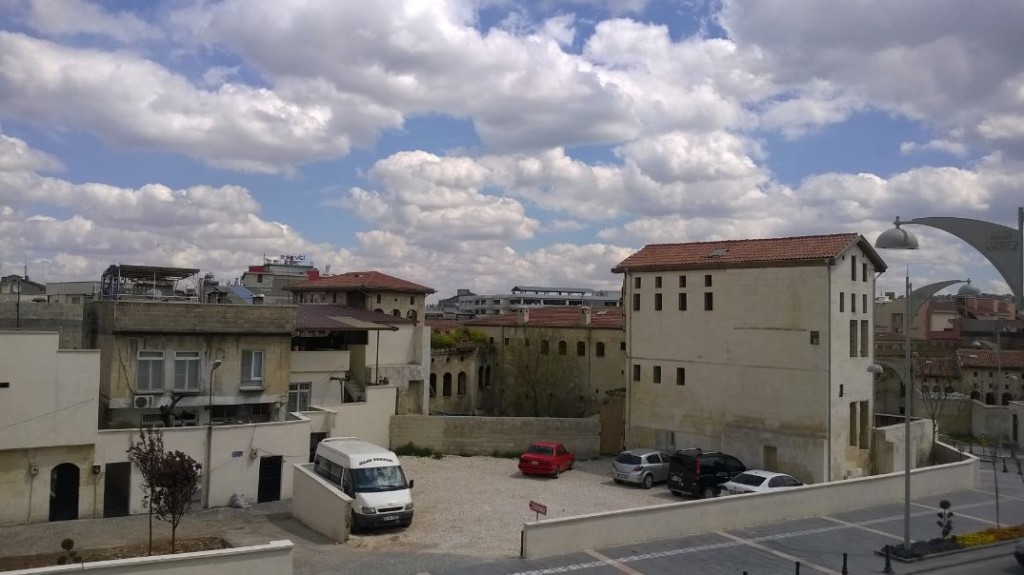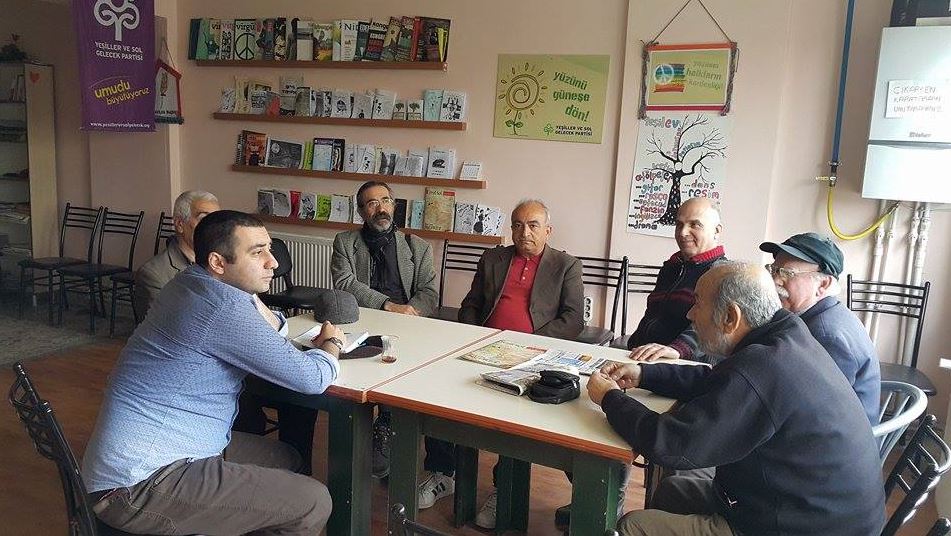Hope amongst the Ruins: The People of Ayntab
Special for the Armenian Weekly
I have reached the final point of my journey on the road to exile: Antep. Or as we say in our Armenian language, Ayntab. I mentioned this before. As we advanced on our itinerary, my emotional burden became increasingly heavier. I started feeling exhausted once we reached Ayntab. With every new town I visited, I thought about the people who had walked this road before me, without rest or water, and the thought of this suffering weighed down on me like a heavy, oppressive humidity. When I reached Ayntab at night, I began looking for a barber so that I could take a little rest and pull myself together. In the former Armenian neighborhood, now dimly lit by the light of the Kurtulus Mosque, I found a barber sharpening his straight razor. I thought it would be a good place to not only get a shave but to learn a bit about the local history of the neighborhood as well.
Before I came to Ayntab, the former Meryem Ana Armenian Church, which had functioned as a prison during the 1980’s and was now the Kurtulus Mosque, had been intensely renovated. When I went to the barber, I overheard a conversation between the shop owners who worked underneath the mosque. The homes of the priests, located behind the church, are currently being renovated. According to the barber, “It’s taking forever to restore everything in this neighborhood. Maybe only 10 people are coming to that mosque every Friday.” The city is full of museums at every corner thanks to the ‘Museum City’ project launched by the municipality of Ayntab. And these museums were once Armenian homes.
A Turkish Flag to Cover Up the Cross
I encounter people with beautiful and smiling faces in the city. Every single one of them is a valuable person. I am on the streets of Ayntab in the company of people my dear friend, the historian Umit Kurt, recommended to me.
Murad Ucaner has a deeper and more detailed knowledge of Ayntab than many historians in Turkey. He taught himself Armenian and translated numerous books relating to Ayntab history, and is the best guide we can have for this region.
First we go to the Meryem Ana Church. After looking at the restoration of the priests’ homes, I take a look inside. For years, a huge flag was hung in the apse of this church: a Turkish flag, hung in order to cover up the cross in the background. The flag remains there, even as the restoration work continues. It’s clear that some people think that if the past of Kurtulus Mosque remains hidden, if there are no crosses visible, people will forget that it used to be a church.
Right across from the church, the Armenian neighborhood is undergoing intense restoration work. Nearly all the houses in the neighborhood have been given a new stucco exterior. The interiors, on the other hand, are still in ruin. And the Vartanyan School located next to the church has been left to rot.
The Nazaryans
While walking around the Armenian neighborhood with Ucaner, we enter an old house now used as a cafe after a small restoration. “You’re really going to love it,” he excitedly tells me, and I understand what exactly I am going to experience as I step inside. The left side of the building is left completely unaltered at Ucaner’s request. The owners of Papirus Cafe left this part of the building as it once was. The right side, which was then used by the servants and workers of the house, has been turned into a cafe. The Nazaryans were one of the richest and most powerful families of the city in the 1700’s. The head of the family, known as “Kara Nazar” (Black Gaze), had this residence built in 1825. Its name is written in many places around the building in Armenian letters. The most important feature of this building is that the walls, doors, and ceilings of these rooms have survived and still hold many pictures and writings that are important to Armenian history. In my travels throughout Anatolia so far, I have not seen such a well-preserved and solidly standing building as this one. With a few more improvements, the Kara Nazar home could become an Armenian addition to the local government’s dream of a “Museum City.”
The Wife of Kevork Chavoush
Murad Ucaner shows me another house as we walk around—a house that he started restoring himself but was not able to finish. He explains how on the top floor he found a picture of Heghine, the wife of the famous Armenian revolutionary Kevork Chavoush, holding a gun.* There are restorations going on everywhere in Ayntab. We can still randomly come across traces of the Armenians’ presence. The locals of Ayntab are honestly quite open-minded on this topic as well. We sit down for a tea break. Celal Deniz and his friends join us as well. Two cups later, the conversation around the table deepens with new faces joining.
‘The smell was so sharp they couldn’t sleep’
Uncle Nusret, a painter who was sitting quietly at the corner of the table, suddenly begins to talk. “So many were slaughtered in Urfa and in Adiyaman. Our grandfathers told us: ‘We killed them, we threw them into the river, there were so many bodies that a bridge formed from one bank to the other.’ There was a stench from over 5 kilometers away,’” he said.
I don’t know what to say. I have been so used to hearing the story from Armenians, now hearing it from “the other side” in Ayntab is almost like a direct confrontation. Uncle Nusret continues, “From Adiyaman, they collected them from 5 villages. ‘We will give you soldiers,’ we told them. Then we bayoneted all of them.’ This is what my grandfather told me.”
One part of me is a traitor; the other, a rescuer
The Cenanis are a family dating back to Ottoman times. Ali Cenani was one of the founding members of the Committee for Union and Progress (CUP), and also an Ottoman deputy. It’s known that he was close to Ataturk, and is famous for making inflammatory propaganda for the Armenians to be deported. He was also a commerce minister in 1924. This man’s name lives on in the form of a cultural center named after him in the city, located right in the middle of the Armenian and Turkish neighborhoods. It is known to have hosted interesting gatherings. It’s said that the debate about the deportation of the Armenian people was carried out here.
A distant relative of Cenani’s is sitting at the far corner of our table. Haluk Soysal. He explains that a portion of the Cenani family actually sheltered Armenians during the time of the deportations: “One side of my family are traitors, the other rescuers,” he says, with a bitter laugh. “In fact, it’s still said that the Cenanis are an Armenian family. At our house, an excavation was carried out in order to find gold. It’s rumored that the name pronounced during the funeral was Harutyun Cenaniyan.”
At first, nobody in the conversation believed it. On the way back to Ayntab I did a little online research and found out that one of the founders of Tarsus College, and its administrator from 1888-93, was someone with the name of Harutyun Cenaniyan. I find this out on the school’s website. The same source tells me that Cenaniyan was from Ayntab. Can all of this be mere coincidence, I asked myself. But this is another research topic in itself.
***
There are many Armenian structures and cultural heritages in Ayntab. And just as many oral histories as well. I was able to transfer a small amount of information to you, but in the short conversation I had, there were at least 10 times as many memories and knowledge shared by our friends. How nice it is that Ayntab has a community, albeit a small one, that is not willing to let the history of the city be forgotten.
Author’s acknowledgment: This journey was supported by the Open Society Foundation, Istanbul.
*The Armenian Weekly cannot verify the veracity of the claim that the woman in the photo is in fact the wife of the celebrated fedayee Kevork Chavoush. In Roupen DerMinassian’s memoirs, the author notes that Chavoush’s wife’s name was Yeghso (not Heghine). In addition, there is no evidence that Yeghso was a fedayee.
Source: Armenian Weekly
Link: On the Road to Exile: 100 Years Later in Ayntab

